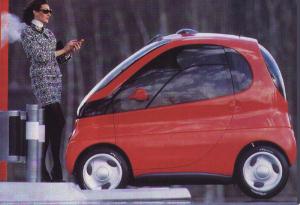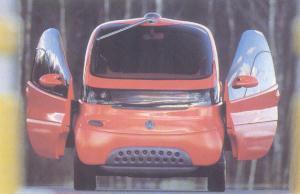|
||||||||||||||||||||||
CitroŽn Tulip |
The Tulip was CitroŽn's vision of the future in 1995 |

|
In 1995 in the French city of Tours, trials began of a new form of urban transport; environmentally friendly and above all, a viable alternative to the internal combustion powered cars that clog our cities and pollute their air. Combining the best features of public and private transport, no Tulip is actually owned by any one driver. Instead, you subscribe to the service and when you need a car, you either 'phone and reserve one or you go to your nearest Tulip rank. A roof mounted lamp tells you whether the car is in service or being recharged. Powered by a 9,6kW electric motor, the Tulip has a top speed of 70 kph and a range of 80 km. Tulip has been seen wearing both CitroŽn and Peugeot badges . |
 |
 |
 |
Tulip: a new concept in urban transport Tulip is an urban public transport system designed for local authorities by the research and development division (DRASS) of PSA Peugeot CitroŽn and its partners VIA GTI and Cegelec. Tulip comprises three parts:
Tulip users have a personal remote control unit allowing them to use the vehicle and to dialogue with the CS. The unit can also be used as a hands-free telephone. The Tulip vehicles are made of sandwich materials with a strong cross-structure. Powered by electricity, the vehicles use the technology
developed for the CitroŽn
AX Electric and the Peugeot |
| © 1995 le Double Chevron/1998 & 2013 CitroŽnŽt |

